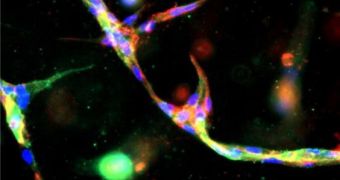A group of investigators in the United Kingdom has recently demonstrated that scientists seeking to analyze the way tumor cells create their own vascular networks have been looking at the wrong things.
Many research groups the world over have attempted to develop methods of preventing the formation of capillaries around cancer tumors. These are very small blood vessels that allow for the cancer to be vascularized, or attached to blood flow.
When this happens, cancerous cells have all they need to multiply and grow out of control. Therefore, preventing this was a main objective in cancer research.
But experts at the University of East Anglia (UEA) have demonstrated that previous studies may have not been studying what they thought they did.
The group showed that the target cells are able to switch their genetic profile, which means that they can turn off genes that are expressed by blood vessels, and turn on genes that are specific only to lymphatic cells.
Details of the new investigation were published in the October 14 issue of the esteemed Journal of Cell Science, AlphaGalileo reports. This cellular trait was thought to be impossible before this study.
The main implication of the new research is that experts may have in fact been researching lymphatic cells for years, and not blood cells as they believed.
“It has always been thought that cells could not change from blood to lymphatic vascular cells. Other researchers have been doing experiments thinking they were looking at blood vessel cells, when in fact they were looking at lymphatic vascular cells,” says Dr Lin Cooley.
“This breakthrough is important because they have not been studying what they think they have been studying. It is a big discovery and will be very important in testing potential anti-cancer drugs,” adds the expert, who was a postdoctoral student with the study.
She goes on to say that lymphatic and blood vasculatures both have similar structures, but very different roles. They are also made of different cell types.
“We have discovered that when vein cells form tube structures, they appear to 'switch' their genetic profile, turning off genes expressed by blood vessel cells, and turning on genes specific to lymphatic vessels,” the expert adds.
“This change can be reversed, and is dependent on the particular environment they are cultured in. We have also shown that their identity changes in response to the cell’s environment rather than only being specified by signals during early embryonic development,” she concludes.

 14 DAY TRIAL //
14 DAY TRIAL //